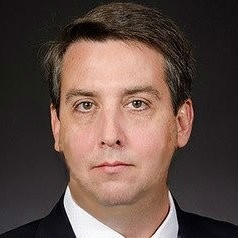
Savvy customer service managers know the substantial compliance risk created by any communication that goes to the wrong recipient under the Telephone Consumer Protection Act. Robert McKay, SVP of Risk Solutions for Neustar, looks at the recently rolled out Reassigned Numbers Database (RND).
According to the Federal Communications Commission, callers must obtain consent from the person actually called, not the person they intend to call. So, if a company has consent to call a consumer at a particular number, but that consumer has since changed numbers, any communication to that original number will be in violation of the TCPA.
Calling a wrong number, even if it’s by accident, leads to serious penalties. Any outbound communication that violates the TCPA is assessed $500 per violation, and $1,500 if it was done knowingly. Because organizations usually engage in a high volume of automated calls, fines can add up quickly – especially when plaintiffs pursue nationwide class action lawsuits alleging massive numbers of violations. This makes TCPA violations very costly, and why TCPA cases are the second most prevalent type of litigation filed in federal court.
One of the most famous TCPA settlements happened in 2014 when Capital One and three collections agencies agreed to pay $75.5M to end a class action lawsuit that arose from calls to customer cell phones. Many other national brands have similarly paid millions to settle TCPA class action suits out of court since then, including American Express, Wells Fargo, USCB, Nationwide Mutual and Sirius XM. They demonstrate how calling the wrong phone number can create serious problems for B2C dialers.
The Reassigned Numbers Database
To help address the significant business liability issues that arise when consumers with reassigned phone numbers receive unintended calls, the FCC recently rolled out the Reassigned Numbers Database (RND).
The RND contains U.S. geographic and toll-free numbers that have been permanently disconnected — and thus possibly reassigned — since January 27, 2021, along with the dates of those disconnections. All voice service providers (landline, mobile and VoIP) are required to report permanently disconnected numbers to the database on the 15th of every month; these changes are uploaded on the 16th, resulting in a new version of the database.
Use of the RND protects callers from TCPA liability in certain circumstances. The safe harbor is available as a litigation defense if three conditions are met. The caller must have (1) obtained consent from the intended call recipient, (2) queried the most recent version of the RND to verify that the intended recipient’s number has not been reassigned since the date of consent, and (3) received confirmation from the RND that the number has not in fact been disconnected (and thus not reassigned) since that date.
A caller who submits a phone number and consent date to the RND receives one of three possible responses:
- Yes, the number has had a disconnect since the consent date (dial manually or do not call)
- No, there has been no disconnect since that date (safe harbor applies; anyone who calls that number and reaches the wrong person and is then sued by that person may be protected)
- No data (the number is not in the RND, so there is no safe harbor)
RND limitations
The RND is a step in the right direction, but the database still has many limitations.
Industry experts expect approximately 90% of calls in the first year to fall into the third category, no data, primarily because carriers have only been required to store disconnect information since January 27, 2021. If a caller is using a consent given prior to that date the RND will be unable to confirm that there hasn’t been a disconnect since then — and companies tend not to ask for renewed consent in the case that customers change their mind and revoke consent. And in some situations, such as third-party collections, consent dates are not available anyway.
Also, relatively few phone numbers (less than 5%) are disconnected each year. The RND will expand over the years as more numbers turn over, but this will be an extremely gradual process — especially since many of the people who disconnect do so often, meaning that the roughly 5% of numbers being added to the database each year represent far fewer than 5% of consumers.
The safe harbor from liability also has time limitations. Protection applies only to the current version of the database, so the maximum length of validity is 30 days (if the caller pings the database on the 16th of the month), and the minimum is one day (if the caller queries on the 15th of the month).
While companies will certainly want to use the RND both to obtain partial safe harbor and for reputational reasons, gaps in the coverage mean that the database will need to be supplemented with other measures to broaden liability protection.
The problem is larger than merely reassigned phone numbers. Compliance with phone-related regulations requires consideration of additional facets of TCPA regulations, as well as emerging regulations from the Consumer Financial Protection Bureau that place limitations upon the number of attempted calls a collections professional initiates within a seven day period . For example, compliance with the TCPA compels B2C dialing organizations to factor in Do Not Call registries at the federal and state level. The type of equipment used to generate the calls is also under scrutiny; any automated dialing machine can exclusively use random number generation. There is a lot to consider in order to safely connect with customers.
Advanced tools to enhance compliance and efficiency
Savvy organizations are filling in these coverage gaps for more holistic regulatory compliance with third-party intelligence to reduce TCPA noncompliance risk. There are tools available that work in tandem with RND information to quickly identify and prioritize the right telephone numbers for a given consumer and fill gaps in a company’s consumer records.
Data insights like these will also help improve dialing efficiency (verification of name and number, phone type, phone in service, etc.), especially when combined with phone behavior intelligence (identifying the best number and time of day to reach a given person) and automatic customer record enhancement (ensuring that CRM files are complete, accurate and up to date). Combining compliance tools with dialer optimization has been shown to yield a 20% improvement in right-party contact rates.
Every organization will have a different approach to the vast middle ground between a confirmed phone-to-name match with consent that allows autodialing and a recent disconnect that requires manual dialing. Contactability scores with assigned risk levels can give call centers the information they need to optimize their operations in line with their specific risk tolerance.
Holistic solutions
Protecting against TCPA liability is just one of the many challenges that call centers face when contacting customers. Operational solutions need to go beyond RND querying to include understanding whom to call or text, what number to use, and when to reach out to maximize the chance of connecting with the call target. These types of holistic solutions can help organizations maintain compliance with outbound dialing regulations while at the same time improving the customer experience, increasing customer lifetime value, and optimizing the efficiency and effectiveness of outbound call center operations.
About the Author
 Robert McKay is SVP of Risk Solutions for Neustar. Neustar is an information services and technology company and a leader in identity resolution providing the data and technology that enables trusted connections between companies and people at the moments that matter most.
Robert McKay is SVP of Risk Solutions for Neustar. Neustar is an information services and technology company and a leader in identity resolution providing the data and technology that enables trusted connections between companies and people at the moments that matter most.





This is one good step to make sure the TCPA regulations are not abused.